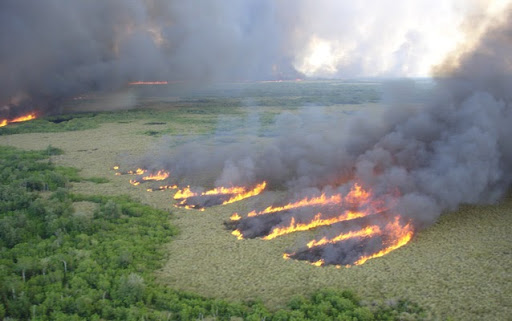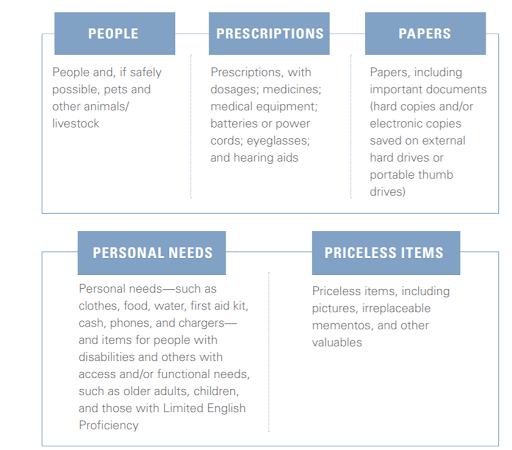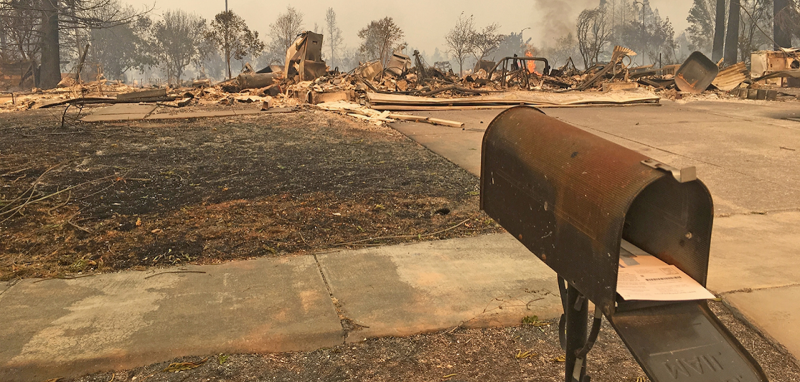Wildfires can happen anywhere and anytime, as we’ve seen with recent wildfires across the country, from the Florida Everglades to the coast of California. A wildfire is an unplanned fire often caused by humans or lightning, that starts to burn in a natural area, with risk increasing in periods of little rain and high winds. Though the Office of Response and Restoration does not respond to wildfires, it’s critical that both OR&R and the National Ocean Service are prepared for the threats that wildfires can pose to our mission critical operations and personnel. In accordance with NOAA’s All-Hazards Concept of Operations Plan, the Disaster Preparedness Program helps to ensure personnel and facilities routinely take appropriate actions to increase readiness before an incident such as a wildfire. These measures are designed to increase the ability to respond effectively to a disaster and continue required mission activities to the greatest extent possible. Some of these actions include:
- Developing and revising disaster plans and hazard analyses for wildfires.
- Conducting exercises to validate plans and improve the process when needed.
- Training personnel for all-hazard types including wildfires.
- Enhancing information sharing and communication systems.
- Update disaster kits and emergency resource lists for National Ocean Service facilities.
- Identify and protect critical IT infrastructure.
- Disseminate accurate, timely, and relevant public information.

Getting Prepared for Wildfire Threats
In addition to the coordination of preparedness planning for the National Ocean Service, the Disaster Preparedness Program strongly believes that our personnel should be prepared for wildfires in their personal lives as well. Receiving timely information about emergency events and weather conditions related to wildfires can make all the difference in knowing when to take action to be safe. It’s recommended that you sign up for your local emergency warning systems to receive important emergency alerts—some options include NOAA Weather Radio and the Emergency Alert System. The NOAA National Weather Service also issues notices when weather conditions such as high temperatures, strong winds, and low relative humidity, make wildfires more likely. The Weather Service notices include a fire weather watch when potentially dangerous fire weather conditions are possible over the next 12 to 72 hours, or a fire weather warning when fire danger exists and weather patterns that support wildfires are already occurring or expected to occur within 24 hours.
Some additional steps you can take to prepare for wildfires include:
- Know your local evacuation routes and find several ways to leave the area in case roads are blocked.
- In case you need to relocate for an extended period of time, identify alternative locations where you can stay, including shelters or family and friends who live outside the area.
- Practice how you will communicate with immediate family members. In case you are not together when a fire weather warning is issued, develop a course of action of how you will communicate and where you will meet.
- Reduce the amount of material that can burn easily in and around your home by removing debris and highly flammable materials.
- Gather emergency supplies, including N95 respirator masks.
- Have a fire preparedness plan for your pets.
- Keep important documents in a fireproof safe or make digital copies.

Survive During A Wildfire
When a wildfire is threatening the area close to your residence, the most effective way to protect yourself is to evacuate immediately to avoid being trapped. When preparing to evacuate, always remember the Five “Ps” of Evacuation: people, prescriptions, papers, personal needs, and priceless items. If you’re driving near a fire during an evacuation, roll up your windows; close air vents to reduce smoke entering your vehicle; and drive cautiously with your headlights or brights on because smoke can greatly reduce visibility.

If you are unable to evacuate and find yourself trapped in your home, immediately call 911 to explain your situation and provide your location. It’s recommended you also take the following actions:
- Turn on all the lights inside and outside to increase the visibility of your home to firefighters and emergency responders.
- Keep all your doors, windows, and vents closed, but keep your doors unlocked for access by responders.
- Wear a N95 respirator mask.
- Move all flammable materials away from doors and windows, including furniture, curtains, and rugs.
- Fill bathtubs and sinks with cold water.
Remaining Safe After Wildfires
The Disaster Preparedness Program always recommends listening to state and local authorities to find out if and when it is safe to return to your local community. Use extreme caution when entering burned areas or buildings. Wildfires can damage the stability of a structure so you should always have a professional inspect your residence or before you re-enter. When outdoors, take caution to avoid hot ash, burnt trees, smoldering debris, and live embers. The ground may still contain areas of heat pockets that can severely burn you or ignite another fire.

When returning to an area impacted by a wildfire, it’s also important to follow health and sanitation guidelines. For instance, wildfires can alter water quality, and you should not drink, brush your teeth, prepare food, or bathe in water until local health officials indicate the water source is safe. You can contact your local health department if you have questions or need additional information.
Finally, it’s important to note that wildfires can dramatically change landscape and ground conditions after they finish burning. This can lead to additional hazards including erosion, landslides, debris flows, and floods due to the exposure of bare ground and the loss of vegetation. Emergency responders and property owners should be aware of these additional risks and prepare as necessary.
Regardless of the hazard, being prepared is key. Know what disasters commonly occur in your area; make a plan; and be sure to practice it. While we navigate through the current times, we continue to support the National Ocean Service to ensure we're in the best possible posture allowing us to effectively respond to and recover from disasters—both natural and human-caused.
